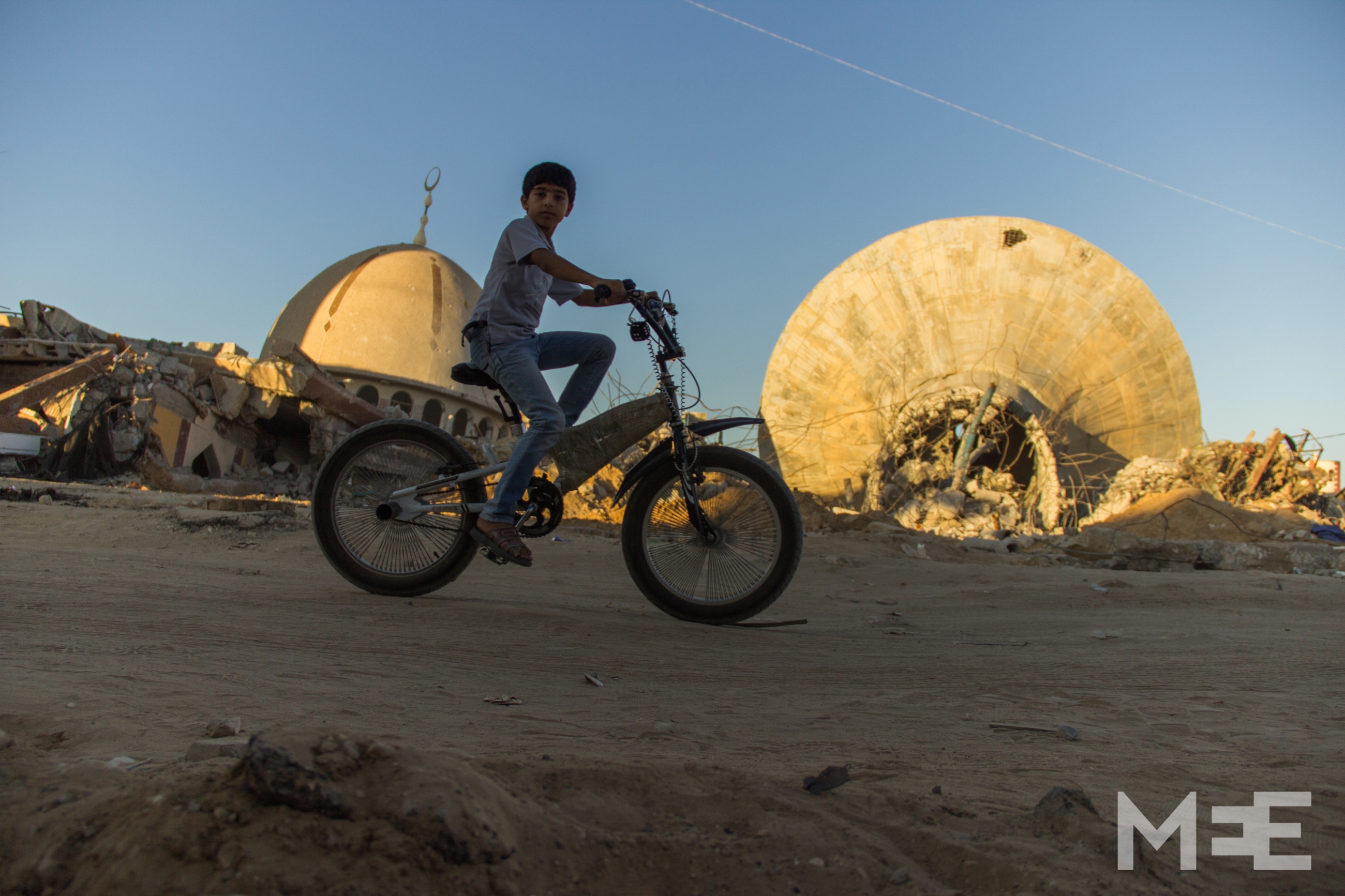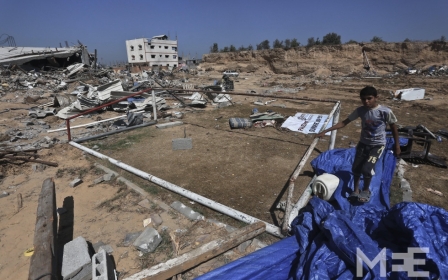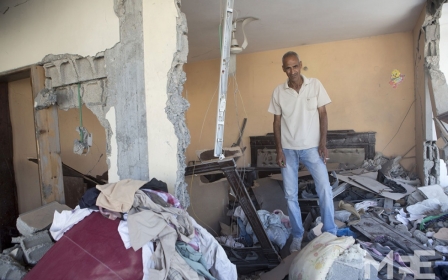In pictures: Life despite everything in Gaza's Khuza'a

Members of the Al-Najjar family sit in front of makeshift tents they have put together next to their three destroyed homes in one of the devastated parts of Khuza'a, a large village of around 10,000 people in the southeast of the Gaza Strip.
Like many other families in Khuza'a, they keep waiting - for help, for aid rumored to be coming from the Emirates, and to build something they can again call home.
Their situation is bleak. Not only has help not come; they are still traumatized by what happened to their family and village in late July during the Israeli offensive, Operation Protective Edge. The family, along with most of the village's residents, had to flee the Israeli attack.
One, 63-year-old Fada Ahmed al-Najjar, said: "There was bombing everywhere. We saw people dying in front of our eyes when we were running. It was crazy."
One young family member, Emad, 20, was killed before he could flee as tanks surrounded the area. His family found him dead days later when they returned during a ceasefire. By then, their homes had been reduced to rubble. The ceasefire did not hold, and they had to flee once again.
With the announcement of a long-term truce, they came back once more, to settle amid the ruins. They have no running water, not even a bathroom, and have electricity for only a few hours each day. Merely to wash, they have to go to relatives in Abasan al-Kabira, more than a kilometer away.
Despite the overwhelming devastation, many people, like the Najjar family, have returned home. Some survive in half-destroyed houses that constantly threaten to collapse. Cardboard, pieces of wood and plastic covers plug holes caused by Israeli shelling. Curtains offer privacy and some protection from the elements where walls have been blown away.
Many worry that the war will return and they might have to face more large-scale attacks. Rains are also due in a couple of months, and their tents and partially destroyed homes offer little to keep out bad weather - and not just during this coming winter. The extent of the destruction of Khuza'a means it will probably take years to be rebuilt.
Khuza'a was particularly targeted during the Israeli offensive. Heavy shelling and bombing preceded the ground invasion of the village on 23 July. Many people were killed or injured in their homes, or targeted while fleeing, a blatant violation of international law.
For days, ambulances could not reach the village to rescue the injured; some were left to bleed to death. Dozens of young men were arrested and taken to prison in Israel. Many people remain missing. Some are reported to have been used by the Israeli army as human shields.
In the short-lived ceasefire, when media could finally access the village, the scenes were ones that no one there will forget. Destruction and death - and the smell of death - were on every corner, while, among the living, those not digging for bodies desperately tried to gather some of their belongings. Reports by human rights organizations indicate that war crimes may have been committed in Khuza'a for which a full investigation needs to be carried out. Justice is also something that the residents of Khuza'a are waiting for.
Yet life has started again even amid the horrendous destruction. Rubble has been removed to give cars access the main street. Young men collect cement blocks to rebuild shattered rooms. A hairdresser works non-stop - he and his customers undeterred by the absence of a front wall to his salon.
The tantalising smell of falafel fills the evening air. At the outskirts of the village, a woman starts to make bread in a "taboon", a traditional mud oven. Soon, the delicious produce is broken into pieces and distributed to the children, most of whom will soon be asleep in tents. The grown-ups sit in front of their mostly destroyed homes to chat before turning in. Some children point to vehicles in the near distance, and tell MEE these are Israeli jeeps. The border, and the source of any future attack, is only a few hundred meters away.
Israel's soldiers may have left the village, but the suffering they have inflicted here will endure for a long time. The process of healing is irrepressible, but also so hard when life must be endured amid such ruins.
Photos by Anne Paq and Basel Yazouri
Middle East Eye propose une couverture et une analyse indépendantes et incomparables du Moyen-Orient, de l’Afrique du Nord et d’autres régions du monde. Pour en savoir plus sur la reprise de ce contenu et les frais qui s’appliquent, veuillez remplir ce formulaire [en anglais]. Pour en savoir plus sur MEE, cliquez ici [en anglais].



